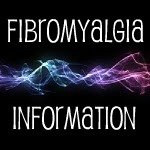Achilles Tendinitis
Achilles Tendinitis
Achilles tendon injuries involve an irritation, stretch, or tear to the tendon connecting the calf muscle to the back of the heel. Achilles tendinitis is a common overuse injury, but can also be caused by tight or weak calf muscles or any condition that causes the tendon to become less flexible and more rigid, such as reactive arthritis or normal aging.
Achilles tendon injuries can happen to anyone who regularly participates in an activity that causes the calf muscle to contract, like climbing stairs or using a stair-stepper, but are most common in middle-aged “weekend warriors” who may not exercise regularly or take time to warm up and stretch properly before an activity. Among professional athletes, most Achilles injuries seem to occur in quick-acceleration or jumping sports like football, tennis, and basketball, and almost always end the season’s competition for the athlete.
Achilles tendinitis can be a chronic condition. It can also cause what appears to be a sudden injury. Tendinitis is the most common factor contributing to Achilles tendon tears. When a tendon is weakened by age or overuse, trauma can cause it to rupture. These injuries can be so sudden and agonizing that they have been known to bring down charging professional football players in shocking fashion.
Plantar Fasciitis and Achilles Tendinitis: Prevention and Treatment of This Common, Painful Condition.
The plantar fascia is a thick, ribbon-like structure that runs from the bottom aspect of the heel towards the bases of the toes. The plantar fascia is part of the structure that helps maintain the arch within the foot. Often the patient who has a tightness of the plantar fascia will subsequently develop a secondary Achilles tendinitis, because of the abnormal forces that then get transferred to the posterior aspect of the heel.
Achilles tendinitis and plantar fasciitis involve inflammation, respectively, of the Achilles tendon as it inserts into the heel and inflammation of the plantar fascia as it inserts to the heel at the bottom of the heel. Patients with these diagnoses may experience pain in the heel or at the posterior aspect of the heel when they first arise in the morning or when they get up from a seated position and take their initial steps.
X-rays of the heel can oftentimes show calcifications within the Achilles tendon at its insertion site or calcifications on the bottom of the calcaneus near the insertion of the plantar fascia. In this case, if the patient has calcifications near the insertion of the Achilles tendinitis, then the correct diagnosis becomes calcific tendinitis.
The treatment for Achilles tendinitis and plantar fasciitis involve stretching and the use of anti-inflammatory medications. There are many stretching exercises to help with Achilles tendinitis and plantar fasciitis but there two exercises in particular I find to be quite useful.
The first exercise involves facing a wall and having your feet flat on the floor with your toes approximately 12 to 15 inches from the wall. At this point, keeping your heel flat against the floor, one must lean into the wall and touch their chest against the wall and hold the stretch for approximately one minute. If in the process of trying to touch your chest against the wall, you are unable to keep your heels on the ground, then you must move closer to the wall until you can touch your chest to the wall. As you become more flexible, you than can begin standing farther from the wall. However, your heels must maintain contact with the floor throughout the one minute of stretching. This exercise should be done immediately upon rising in the morning and repeated for one-minute intervals throughout the day.
The second exercise designed for both plantar fasciitis and Achilles tendinitis involved placing one’s foot into a corner between the floor and a wall. The ideal angle for the bottom of the foot should be 45 degrees. One should keep their knee locked straight during this process. With the knee locked straight and the heel on the floor and foot resting up again the wall, one attempts to push downwards and hold this stretch for approximately one minute. Someone once described this exercise as pretending to crush a bug that exists at the junction of the floor and the wall. Again, this exercise should be performed upon arising in the morning and throughout the day, stretching the left foot and then the right foot for approximately one minute each.
If one combines the Achilles stretch with the plantar stretching, then the total time to complete the stretching would be approximately three minutes. One minute would involve stretching both Achilles tendons by placing the chest against and the wall and a minute each would be spent on stretching the plantar fascia of each foot.
If these simple exercises do not alleviate the condition, then scheduling an appointment with an orthopedic surgeon would be appropriate. At that visit, x-rays would be obtained and further treatments discussed. The next step for treatment would be cortisone injections into the plantar fascia, to alleviate stubborn inflammation and soreness.
For those severe cases that do not respond to non-surgical measures, surgical intervention may be necessary. Endoscopic plantar fascia release (very small incisions, using a tiny camera to locate the plantar fascia) would be performed, where the fascia is surgically “released” or loosened, providing relief for 70-80% of patients who have the surgery.
Should you have any questions concerning plantar fasciitis or Achilles tendinitis, you can visit us at the Orthopaedic & Spine Center for an evaluation of this or any other Orthopaedic or Pain Management issue.
Dr. Boyd Haynes www.Isnare.com
Dr. Robert J. Snyder, MD is a doctor with
the Orthopaedic and Spine Center, a leading provider of Suffolk orthopedics services
such as Suffolk ankle surgery and Suffolk outpatient total joint replacement. The Orthopaedic
and Spine Center can be found online at: OSC-Ortho.com.

The Achilles' tendon - illustration from Gray's Anatomy
SPONSORS


